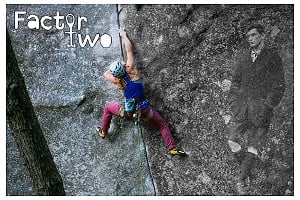
You would wonder about your sanity, wouldn’t you?
https://www.theguardian.com/science/2021/mar/05/ship-hovering-above-sea-cor...
Has anyone here seen one for real?
The explanation in the article appears nonsensical: if the image of the ship is 'raised' owing to refraction, then why doesn't that also happen to the image of the water on which the ship is floating?
It's a new generation hovercraft. You can see the blast effect on the sea below.
> The explanation in the article appears nonsensical: if the image of the ship is 'raised' owing to refraction, then why doesn't that also happen to the image of the water on which the ship is floating?
That was exactly my first thought.
> Has anyone here seen one for real?
Nothing like as good as that one, but I did see this from Clachtoll once (attached), and I remember seeing, I think, the Harris hills, appear as massive pillars rising from the sea, from the north west somewhere.
I believe these mirages usually contain several layers, which can be reversed, so the one in the article you link probably shows a reversed layer of sky "under" the ship, and omits the base of the ship and surface of the sea.
> The explanation in the article appears nonsensical: if the image of the ship is 'raised' owing to refraction, then why doesn't that also happen to the image of the water on which the ship is floating?
Is it possible it's been tidied up using photo shop?
> That was exactly my first thought.
Indeed. The water should appear super imposed on the sky. This would cause a change in apparent sky brightness in a horizontal band, as with skog’s photo below.
My first thought was that I couldn’t quite follow the explanation and that was me being a bit thick! Physics was never my strong point.
> Is it possible it's been tidied up using photo shop?
I wondered about the possibility of manipulation so I had a look around and it seems that such mirages can be corroborated by records of atmospheric conditions at at the location where a mirage has been photographed. This blog post has a couple of examples:
https://cliffmass.blogspot.com/2013/12/giant-towers-over-olympic-mountains....
Having done a bit of looking myself I now think that the mirage bit is the sky being projected below the ship which creates a lower horizon with the ship left where it was. Not the ship being raised up which is what it looks like.
...or the ship was on the horizon and the split raising it up was exacltly on the horizon which is why we don't see any water. The clouds either side of the ship appear a little darker than the sky below.
Just had a wee dig in my photos, you can see the layers and the image inversion easier out at the point.
It looks a bit like a reflection, and I suppose that's what it is - but in the air rather than in the water.
There was an explanation on BBC news this morning; along with the weather forecast near the end of the program. Only caught part of it, but if I heard correctly, a temperature inversion was mentioned as causing refraction. I assumed a mist layer being involved.
Might be available later on iPlayer.
These are called Fata Morgana. Named after Morgan le Fay for some reason. I've seen loads, they're quite common. Used to see them a lot East Anglia and again now here in Cornwall, though never as spectacular as this.
I think Morgana was used illusions to enchant people so it’s appropriate in that sense but I don’t know why it would be applied to this particular mirage.
After posting last night I spent a while googling explanations. I found it hard to come up with anything clear and convincing, but it certainly seems that lots of variations are possible with multiple or inverted images with different possible paths for the light. I get the impression that the effect in the photo probably depends on total internal reflection at a sharp boundary between layers of air at different temperatures rather than on refraction, but I couldn't find a proper diagram.
I assume there must be a boundary between upper warm air and lower cold air from above which there is a light path refracted up and then down again to the observer, but, below which this path does not exist (due to total internal reflection at the boundary?). The boundary would be part way up the ship's hull, so that the observer sees the mirage of the ship from this boundary upwards.
I assume there must be a boundary between upper warm air and lower cold air from above which there is a light path refracted up and then down again to the observer, but, below which this path does not exist (due to total internal reflection at the boundary?). The boundary would be part way up the ship's hull, so that the observer sees the mirage of the ship from this boundary upwards.
Dont worry I feel a bit thick too and I haven't seen anything on here that I understand yet! That diagram with the curved light path and another one with straight lines leading to an elevated image doesn't help either. I get that light is refracted and takes a curved path to the eye but so what? How does that give the perception that the object has shifted is the bit I don't get. Optics is strange😀
In essence, your brain always assumes (mostly quite reasonably) that any light reaching your eye has travelled in a perfectly straight line. If the light has actually bent, you'll see the object at the position that's a straight line followed backwards from the angle the light arrived at your eye.
Nope still don't get it. How does my eye detect light has been bent?
> Nope still don't get it. How does my eye detect light has been bent?
You can see an object in a mirror with light that has been bent through a corner (reflected) at the mirror. The object is not actually in the direction of the mirror. This is similar except that the light has been bent by a different process (refraction rather than reflection).
During the time I lived in Applecross this phenomenon used to occur certainly around 7 in the morning
The house was on the seashore and we had to walk to the front of the pub to wait for the HD bus to take us hurtlng over the bealach to Kishorn (Now sitting in that bus hurtling down the other side at what seemed like Mach 2 with mad Alfie at the wheel preparing for entry interface with an inversion cloud layer really set you up for the day!)
Anyway, back to the point - at that time in late spring/early summer mornings you'd hear the seabirds in the bay, including a good number of eider ducks. on some mornings the water became invisible and merged with the sky and you could see the birds apparently floating in mid air. At these times I think the water in the bay was dead calm and smooth as a mirror. You really could not see the sea ending and the sky beginning and yet the birds stood out apparently in anti gravity.
If it were not for the midges eating your face and eyes and riding tiny motorbikes into your ears at that time the experience would have taken my breath away.
Saw an example of this a couple years ago off the coast of Falmouth. Definitely took us a few minutes to work out what we were looking at as the effect was really quite dramatic.
> Nope still don't get it. How does my eye detect light has been bent?
That's exactly the point. It doesn't detect that the light has been bent. If it could somehow detect that and compensate for it then there would be no illusion. The illusion happens because the light has been bent but your eye can't detect that so it naively assumes the light travelled straight, like it normally does. You see the object in the direction the light arrived from rather than where it actually originated.
> You would wonder about your sanity, wouldn’t you?https://www.theguardian.com/science/2021/mar/05/ship-hovering-above-sea-cor...
> Has anyone here seen one for real?
I've seen it a few times, remember wondering if I was having a flashback the first time 😁
Good explanation! The penny has dropped, not many grey cells available these days. Thank you.
Took this a few years ago (cairngorms really looking like a plateau from Creag Megaidh).
https://www.prog99.com/Stuff/IMG_4640.JPG
Fata Morgana?
If you look carefully you'll see the sky above the ship is very slightly different colour to the 'sky' below it and there is an ultra-faint horizon where it should be - I think it's not a mirage, but a 'wind lane' - the sea closer to the viewer has a ripple on it, but the sea further out is simply flat calm and the same colour as the sky.
The way I see it, the refracted light from the ship (and from the surface of the sea) is arriving at the observer from exactly the same direction as the non-refracted light from the sky just a little higher, superimposing the 2 light sources.
The (interfering) light from the sky will then have the effect of reducing the perceived intensity of both the ship and the surface, such that the tone of the sea surface appears little different to that of the sky, and the ship appears faded compared to the way it would look normally.
> The (interfering) light from the sky will then have the effect of reducing the perceived intensity of both the ship and the surface, such that the tone of the sea surface appears little different to that of the sky, and the ship appears faded compared to the way it would look normally.
That sounds plausible. Presumably we should be seeing a mirage of the sea beyond the ship (so we are seeing "over" the ship in the same way we are seeing "over" the horizon). I wonder if this mirage of the sea gradually blends into the sky in the far distance without a perceivable false horizon.
In reply to geode:
> there's some atmospheric duct raytracing here which i found helpful. notice the sweet spot for superior mirages (non-inverted) at ~20km in the example. beyond ~50k objects would invert (but wouldn't see unless >100m high..)
Thanks! That's the first thing I've seen that tries to give a proper explanation. I think the first diagram in the Superior Mirage section explains why the sky is seen above and below the ship, which, as you say is in the duct and less than 20km away (though presumably these distances might depend on the details of the inversion layer). The rays from the sky appearing below the ship have crossed the duct from above beyond the ship at an an angle which doesn't "reflect" them, but still reach the observer due to the earth's curvature.











